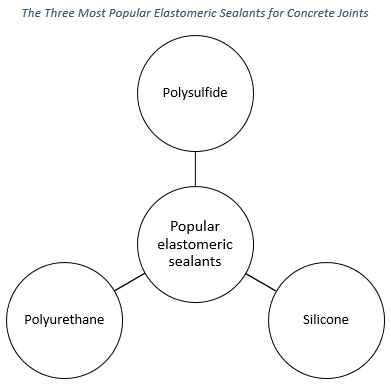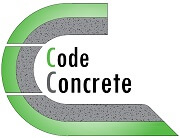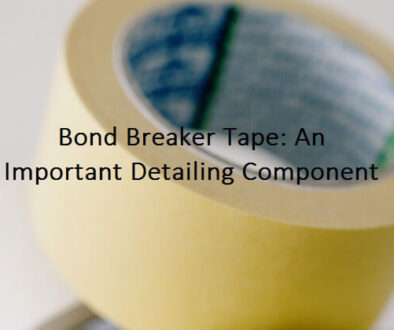The Most Popular Types of Modern Joint Sealants for Concrete

Last updated on June 8th, 2022
Definition of joint sealants for concrete
A joint sealant can be defined as a sealing material which prevents the intrusion of water and contaminants into a joint.
Performance requirements of a good joint sealant
There are plenty of brands of joint sealants for concrete in the market with different types, composition, classes, and grades, complying with standards and specifications, which can be suitable for the various types of concrete joints. Nevertheless, sealants should generally owe certain performance requirements, most importantly including:
- Impermeability: sealants should prevent the ingress of water and other liquids.
- Flexibility and elasticity: they should be able to accommodate to the movements of the joint. Thus, they should stretch or compress accordingly, without losing their overall integrity.
- Bond: also, sealants should preferably have a strong bond to concrete.
- Resistance and durability: In addition, a good sealant should be able to resist weathering conditions, wear and tear, discoloration, certain chemicals and stains when necessary, and have an acceptable service temperature range.
- Service life, installation, repair, and replacement: moreover, joint sealants should preferably have a long lifespan, be easy to install, repair, and replace.
Types of joint sealants for concrete
Joint sealants can be primarily categorized into field-molded and preformed sealants. Field-molded sealants include various types such as mastics, thermoplastics (hot and cold applied), and thermosets. Whereas, preformed sealants include embedded seals (rigid and flexible), gaskets, strips, compression seals, flexible foam, and others.
Traditional vs modern joint sealants for concrete

Traditional joint sealants were basically mastics and bituminous compounds, which lacked flexibility and elasticity. In fact, their behavior was more comparable to plastics. Hence, such sealers can generally only accommodate to minor joint movements, and will mostly fail with substantial movements.
However, with the developments in this field, modern joint sealants gradually emerged. These sealers are mainly elastomeric thermosets, owing relatively higher flexibility and elasticity, and a better overall performance. Thereby, elastomeric sealers can generally accommodate to considerable joint movements.
The most popular types of modern joint sealants
With the rapid advancements in this field, numerous sealants and blends came up. In brief, the most popular types of modern field-molded sealants include polysulfide, silicone, and polyurethane. Whereas, the most popular types of preformed compression seals include bituminous strips and neoprene.
Field-molded sealants
The most popular concrete joint sealants for concrete are elastomeric, which are covered by ASTM C920 – Standard Specification for Elastomeric Joint Sealants. This standard addresses elastomeric joint sealants, their requirements and test methods, and classifies them according to type, grade, class, and use.
In this section, we will consider three of the most popular field molded elastomeric joint sealants including polysulfide, silicone, and polyurethane. In general, these types of sealants are highly elastic, resistant to weathering conditions, resistant to wear, and have a good adhesion to various substrates. Thereby, their benefits made them widely popular as joint sealants for concrete. In addition, they are cold applied thermosets which cure either with the moisture in the air or by a catalyst.

Polysulfide
A polysulfide sealant is one of the oldest elastomeric sealants commercially available. In fact, it was the first type of high performance sealants which had a long service life and could accommodate to relatively large joint movements.
Polysulfide joint sealants are available as one or two components. The one component products generally come in cartridges and are non-sagging, easy to use, and suitable for both vertical and horizontal joints. Whereas, the two-component products can be self-levelling, and are mixed on site.
Silicone
A silicone sealant can be considered as one of the best elastomeric joint sealants. Mainly, it is highly flexible, has a relatively broad service temperature range, high recovery, and long lifespan. In addition, it is generally tougher than polysulfide, and can withstand more wear and tear. However, silicones are mostly non-paintable, and can contain acids which may attack concrete.
Modern silicone sealants are available as one-component or multi-component products. One-component silicones generally come in cartridges and are non-sagging, thus suitable for horizontal and vertical joints. Whereas, multi-component silicone joint sealants can be self-leveling, which makes them more suitable for horizontal joints. In addition, silicones are also available as “neutral” products which contain little to no acetic acid.
Polyurethane
A polyurethane concrete joint sealant is also one of the best elastomeric sealants. Besides, it is the most commonly used type of sealants nowadays, due to its excellent properties. It is generally easy to apply, highly flexible, non-staining, paintable, highly durable, and has a relatively long service life. In addition, similar to silicone, polyurethane sealants have a high recovery, and can withstand cycles of compression and tension and retain their original shape. Furthermore, this type of sealants is tough, and is highly resistant to wear and impact, thus being suitable for heavy foot traffic areas and rubber tire loads.
Polyurethane joint sealants are available as one component products, usually in cartridges, or as two components that are mixed on site, which can be self-levelling. Thereby, they can be suitable for horizontal and vertical joints.
Preformed joint sealants
The most popular preformed joint sealants are compression seals mainly of materials including modified bituminous compounds and neoprene. This type of sealants functions based on continuously being in a compressed form. Specifically, the preformed strip should be wider than the maximum opening of the joint, so that it always remains compressed. In addition, lubricants and adhesives are usually used to facilitate the installation of such sealants.
Conclusion
There are various types of concrete joint sealants available in the market, however the most popular are elastomeric sealants including polysulfide, silicone, and polyurethane. In addition to these field molded sealants, preformed joint sealants are also popular and easy to apply.




